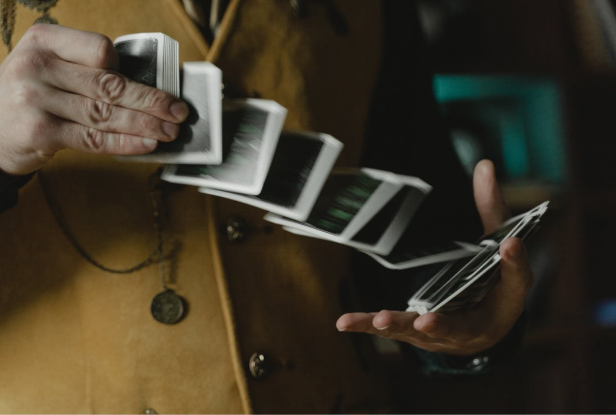From ancient street performers to Netflix specials featuring modern illusionists, magic has always had a hold on our imagination. We know it’s a trick, a sleight of hand, a carefully calculated performance—but we still can’t look away. And even in a world where technology can simulate almost anything, there’s something uniquely exciting about a good, old-fashioned mystery that refuses to be explained.
So why are we still so captivated by magic?
The answer lies deep in our human psyche—our love for wonder, our craving for surprise, and our desire to believe that just maybe, there’s more to life than what we can see.
A Brief History of Wonder
Magic isn’t a modern invention. It’s as old as civilization itself. Ancient Egyptians were known to perform cup-and-ball tricks as far back as 2500 BC. Medieval conjurers amazed royal courts with levitating objects and vanishing acts. Over time, magic evolved from spiritual ritual to theatrical spectacle. By the 19th century, magicians were the rockstars of their time, performing in ornate theaters for gasping crowds.
And yet, even with all the advancements of the digital age—augmented reality, CGI, AI simulations—live magic still hits different. It speaks to something primal: our need to wonder, to question, and to be amazed without knowing exactly why.
The Psychology Behind the Spell
What makes magic so irresistible isn’t just the performance itself—it’s how it messes with our expectations. Our brains are wired to seek patterns, explanations, and logic. Magic breaks those rules.
Psychologists have studied how sleight of hand and misdirection work, revealing just how easily our perception can be manipulated. When a magician waves one hand, your attention follows—meanwhile, the other hand is doing the real trick. And even when we know we’ve been duped, the feeling of being momentarily fooled is oddly satisfying.
It’s this balance of confusion and delight that makes magic such a lasting form of entertainment. We want to be surprised—but in a safe, controlled way.
Magic in Modern Times
Today’s magic isn’t just card tricks and top hats. It’s been modernized, rebranded, and even gamified. You see it in fashion, art, and digital culture. The idea of mystery and enchantment is everywhere—from surreal TikTok transitions to immersive VR worlds where logic doesn’t apply.
You also see it in how games and experiences are themed. There’s a growing trend toward incorporating fantasy, mysticism, and magical aesthetics into everything from mobile apps to design interfaces. These enchanted environments allow us to escape reality, if only for a few moments.
One place where this theme thrives is in immersive game design. Take magician slots, for instance. It brings the world of illusion to life in a visually rich, interactive format. With spellbooks, secret chambers, and powerful symbols, it captures everything we love about magic—the suspense, the reveal, and the thrill of not knowing what’s next. It’s storytelling through atmosphere, and it’s no surprise that themes like these resonate deeply with players.
Why Adults Still Love Magic
You’d think that as we grow older and “wiser,” we’d stop enjoying magic. But in truth, the opposite is often true. Adults crave wonder just as much—if not more—than children. After all, we live in a world where so much is explained, analyzed, and broken down into data. Magic offers a momentary break from that.
It reminds us of being curious. Of asking “how?” without needing a clear answer. That curiosity is part of what keeps life interesting, and magic taps into that sense of childlike awe in a way few things can.
Plus, let’s face it—life can be routine. Magic disrupts the expected. It invites us into a space where the usual rules don’t apply, and anything can happen.
The Role of Mystery in Creativity
Magic also fuels creativity. It challenges what we believe is possible. Writers, artists, musicians, and filmmakers often use magical themes to explore deeper truths. Think of magical realism in literature, or fantasy films that tackle very human emotions through mythical storylines. These stories give us tools to process real life through metaphor and imagination.
In design and entertainment, the use of magical elements also adds a layer of engagement. A simple interface becomes a world of hidden pathways. A normal challenge becomes an enchanted quest. We’re not just doing a task—we’re experiencing a story.
That’s the appeal of something like magician slots—it’s more than a game; it’s a theme park of the mind. It captures that feeling of stepping backstage at a magic show, where anything could be real for just a moment longer.
Final Thought: A Little Mystery Goes a Long Way
In a world that often demands constant explanation and hard facts, magic gives us permission to let go. To not know. To simply wonder.
And maybe that’s why it continues to thrive—not just on stage, but in our culture, our games, and even our daily lives. Because we don’t always need another answer. Sometimes, we just need to believe in the impossible—even if only for a moment.
So whether you’re watching a magician make a coin disappear, reading a fantasy novel late at night, or exploring the mysterious world of magician slots, remember this: it’s okay to be amazed. In fact, it’s essential.






